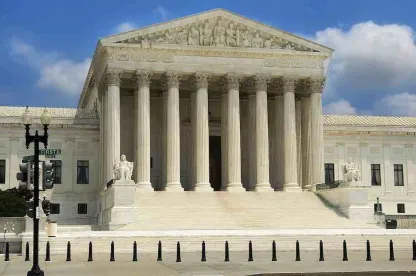On June 25, 2021, the United States Supreme Court held that class members who could not establish “concrete harm” flowing from alleged statutory violations of Federal Credit Report Act (“FCRA”) lacked Article III standing to seek relief in federal court. Transunion LLC v. Ramirez, No. 20-297 (U.S. June 25, 2021)).
Factual Background
Plaintiff alleged that Defendant TransUnion prepared a credit report on him that incorrectly identified him as possibly being on the terrorist watch list. He learned of the alleged mistake after being denied a car loan.
Plaintiff then requested a copy of his credit file from TransUnion, which responded in two separate mailings. The first mailing included his credit file and summary of rights under the FCRA, but it did not mention the terrorist watch list alert. The second mailing included the alert, but did not include a separate summary of rights.
Plaintiff brought suit on behalf of himself and a putative class alleging that TransUnion violated the FCRA by failing to follow “reasonable procedures” to ensure that his and class members’ credit files were as accurate as possible. He further alleged that TransUnion violated the “full file” disclosure requirements of the FCRA by providing copies of complete credit files and the required summary of rights in two separate mailings, instead of one. Plaintiff argued this created a risk of future harm because class members were at risk of not learning about the alert and seeking correction.
Following a jury trial, the United States District Court for the Northern District of California awarded the class $60M in damages, holding that all individuals with incorrect information had standing to bring suit—not just those who had those reports transmitted. The Ninth Circuit affirmed, but reduced the award to $40M, finding the punitive damages imposed by the District Court to be unconstitutionally excessive.
The Supreme Court’s Ruling
In a 5-4 decision, the Supreme Court overturned the Ninth Circuit’s ruling. The Court held that a risk of future harm is not a cognizable injury sufficient to confer standing under Article III allowing a plaintiff to pursue monetary damages. In so ruling, the Court observed that out of the 8,185 class members who had a report with an inaccurate terrorist watch list alert, only 1,853, including the Named Plaintiff, actually had their reports transmitted to a third party. The Court noted that under the traditional tort of defamation, the mere existence of inaccurate information without dissemination was not actionable, and the majority of the class thus could not allege concrete harm.
This decision reinforces prior precedent that Article III standing requires a “concrete harm” even when there is a statutory violation and that “an injury in law is not an injury in fact.” Ramirez at *2 (citing Lujan v. Defenders of Wildlife, 504 U. S. 555, 560–561 (U.S. 1992)). Notably, the Court’s decision further applied this concept to the class action context, holding that every class member must be able to show this concrete harm that inures standing. Thus, the Court concluded that the 1,853 class members whose credit reports actually were disseminated to third parties showed a concrete harm and had Article III standing, but the remaining 6,332 class members had no justiciable case or controversy.
Implications
The ruling is likely to lead to class actions where there is no concrete harm to be increasingly filed in state courts, particularly in states that have more permissive standing standards.





 />i
/>i

